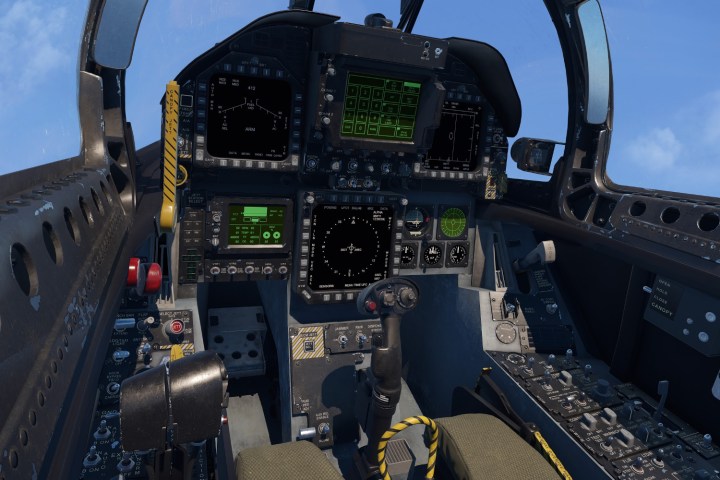
In a blog post provided by Nvidia, the simulator is based on Mass Virtual’s Virtual Attain platform and Nvidia’s Quadro graphics processor. The combo can jet a highly detailed virtual cockpit from a F-18 fighter straight to the HTC Vive and Oculus Rift headset. This simulator provides the experience of flying over the ocean and using the cockpit radar, the displays, and sounds to determine if an enemy fighter is within range. The pilot then selects the appropriate missile, locks on the target, and fires away.
The platform on display at the conference will consist of one server packing the Quadro P6000 graphics chip that will generate four simultaneous VR demos to the HTC Vive and the Oculus Rift headsets. The Quadro P6000 is Nvidia’s latest professional desktop workstation solution based on its most-recent “Pascal” architecture, the same platform that powers the latest GeForce GTX 10 Series cards in the consumer market.
Here are the Quadro P6000 specs compared to the GeForce GTX Titan X and the GTX 1080 just for kicks:
| Quadro P6000 | GTX Titan X | GTX 1080 | |
| Architecture: | GP102 | GP102 | GP104 |
| CUDA Cores: | 3,840 | 3,584 | 2,560 |
| Base clock speed: | 1,417MHz | 1,417MHz | 1,607MHz |
| Boost clock speed: | 1,531MHz | 1,531MHz | 1,733MHz |
| FP32 Performance: | 12 TFLOPs | 11 TFLOPs | 9 TFLOPs |
| On-board memory: | 24GB GDDR5X | 12GB GDDR5X | 8GB GDDR5X |
| Memory bandwidth: | Up to 432GB/s | Up to 480GB/s | Up to 320GB/s |
| Memory interface: | 384-bit | 384-bit | 256-bit |
| Graphics bus: | PCI Express 3.0 | PCI Express 3.0 | PCI Express 3.0 |
| Max Power consumption: | 250 watts | 250 Watts | 180 watts |
| Size: | 4.4” (H) x 10.5” (L) – Dual Slot | 4.4” (H) x 10.5” (L) – Dual Slot | 4.4” (H) x 10.5” (H) – Dual Slot |
| Ports: | 4x DisplayPort 1.4 1x DVI-D DL |
1x DisplayPort 1.4 1x HDMI 2.0b 1x DL-DVI |
1x DisplayPort 1.42 1x HDMI 2.0b 1x DL-DVI |
| Starting price: | $7,000 | $1,200 | $600 |
As shown above, all three cards provide monstrous graphical performance for a high price tag, but the investment is indeed worth the cost. They’re based on the latest technologies to seemingly drive any application, whether it’s super-high-definition PC gaming, professional software for creating highly complex designs, or immersive virtual reality experiences to effectively train soldiers while keeping them safe.
According to Nvidia, the single-server aspect of the U.S. Navy’s “Beyond Visual Range” VR simulator is important because the government can set up several VR training stations in small, remote spaces on a ship for soldiers to use while deployed at sea. Even more, the level of realism achieved by the Virtual Attain platform and the Quadro P6000 graphics chip means soldiers will learn faster and better at a reduced cost thanks to the accurate, life-like environment provided in VR.
“When you can achieve suspension of disbelief in a virtual environment, a user has much longer retention of what they’ve learned,” said John Brooks, CEO and founder of Mass Virtual. “The level of visual realism and immersion we can achieve with Nvidia Quadro GPUs enables better training of our military so that both they and our national security are safer.”
The platform can also integrate into the Navy’s current software systems, Brooks added.


